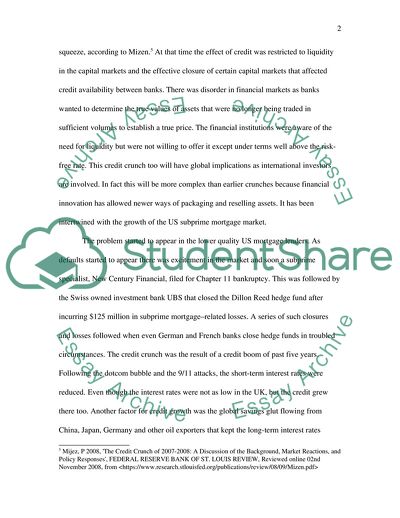Cite this document
(Credit Crunch Since Summer 2007 Coursework Example | Topics and Well Written Essays - 2500 words, n.d.)
Credit Crunch Since Summer 2007 Coursework Example | Topics and Well Written Essays - 2500 words. https://studentshare.org/finance-accounting/1717075-credit-crunch-since-summer-2007
Credit Crunch Since Summer 2007 Coursework Example | Topics and Well Written Essays - 2500 words. https://studentshare.org/finance-accounting/1717075-credit-crunch-since-summer-2007
(Credit Crunch Since Summer 2007 Coursework Example | Topics and Well Written Essays - 2500 Words)
Credit Crunch Since Summer 2007 Coursework Example | Topics and Well Written Essays - 2500 Words. https://studentshare.org/finance-accounting/1717075-credit-crunch-since-summer-2007.
Credit Crunch Since Summer 2007 Coursework Example | Topics and Well Written Essays - 2500 Words. https://studentshare.org/finance-accounting/1717075-credit-crunch-since-summer-2007.
“Credit Crunch Since Summer 2007 Coursework Example | Topics and Well Written Essays - 2500 Words”. https://studentshare.org/finance-accounting/1717075-credit-crunch-since-summer-2007.


